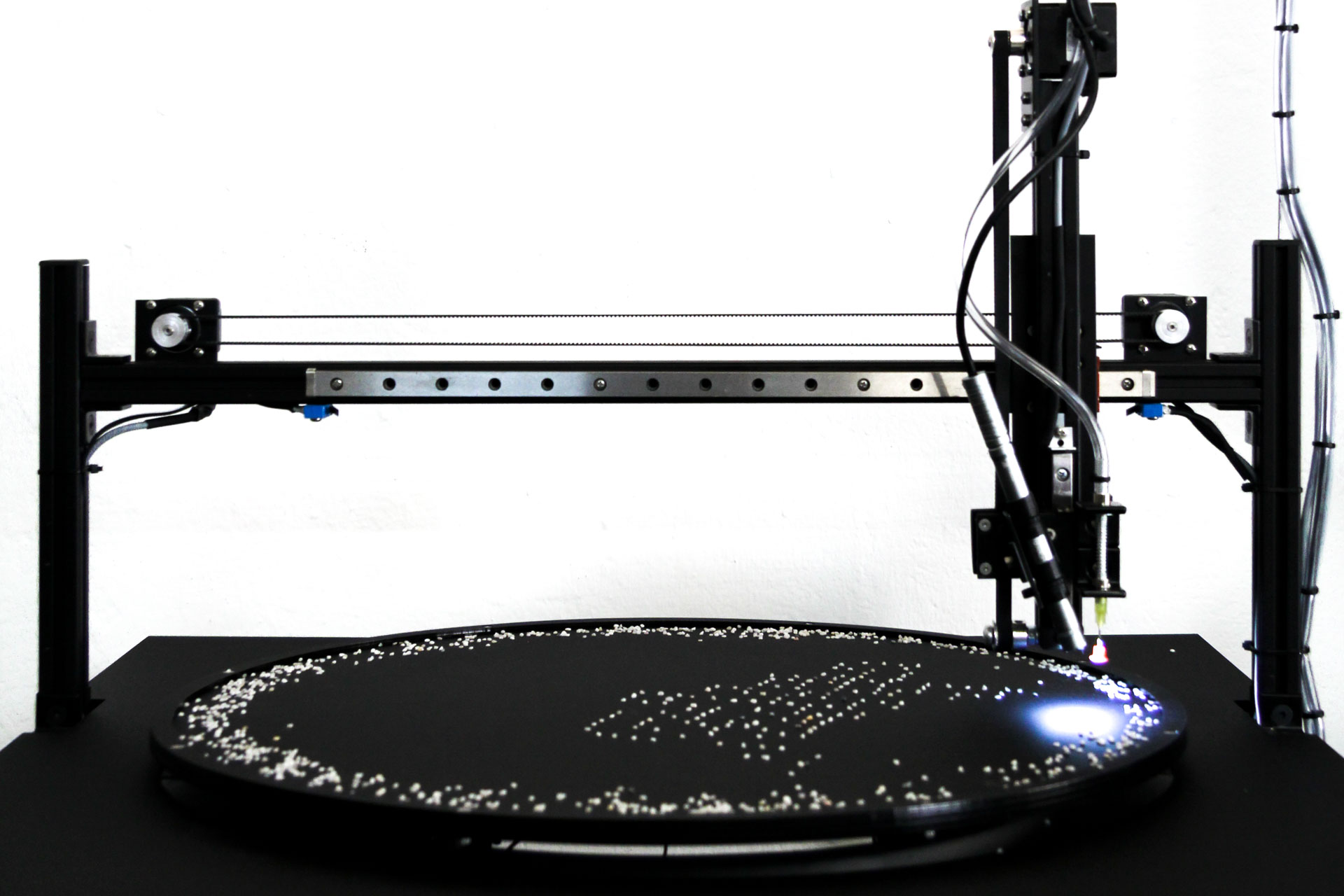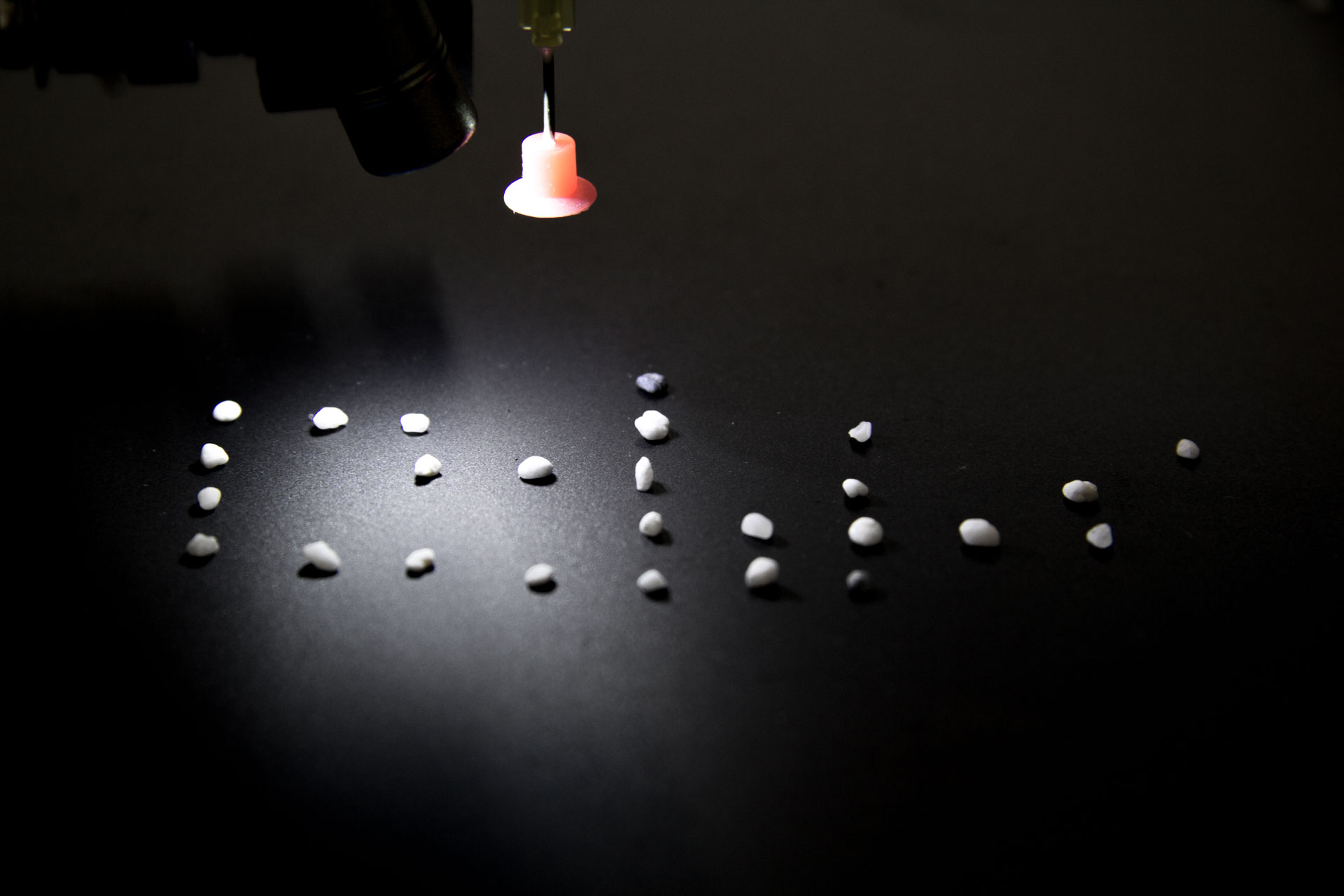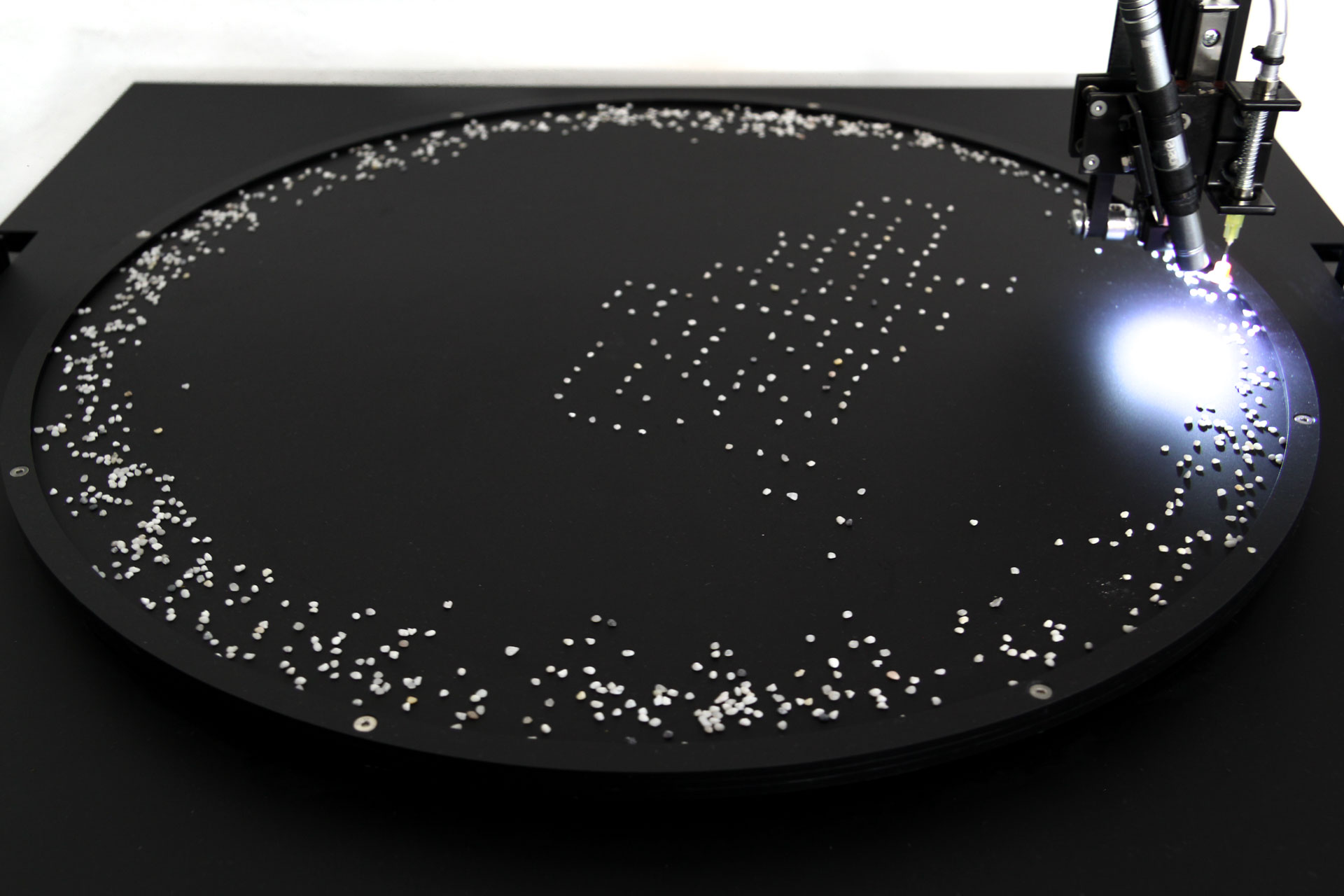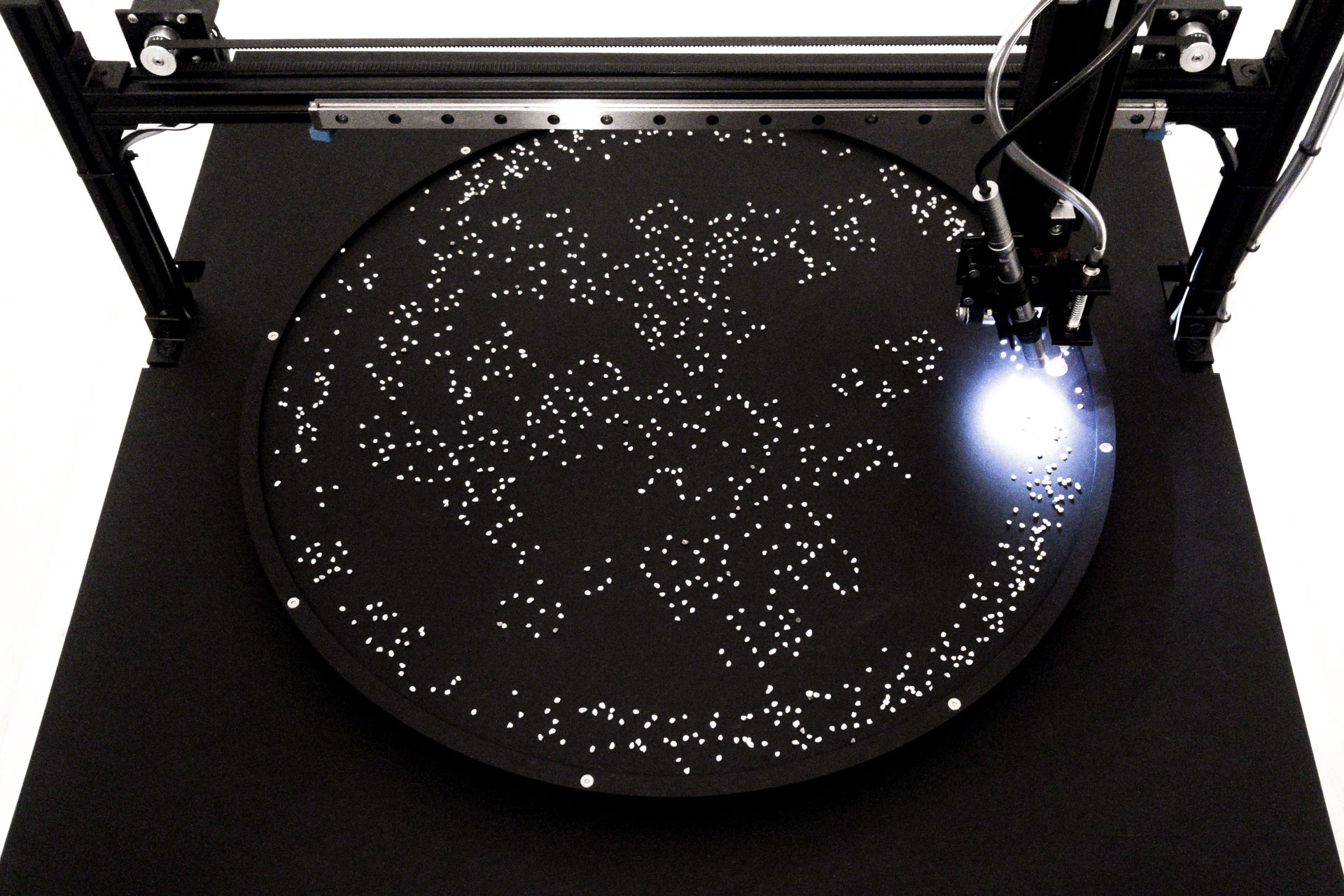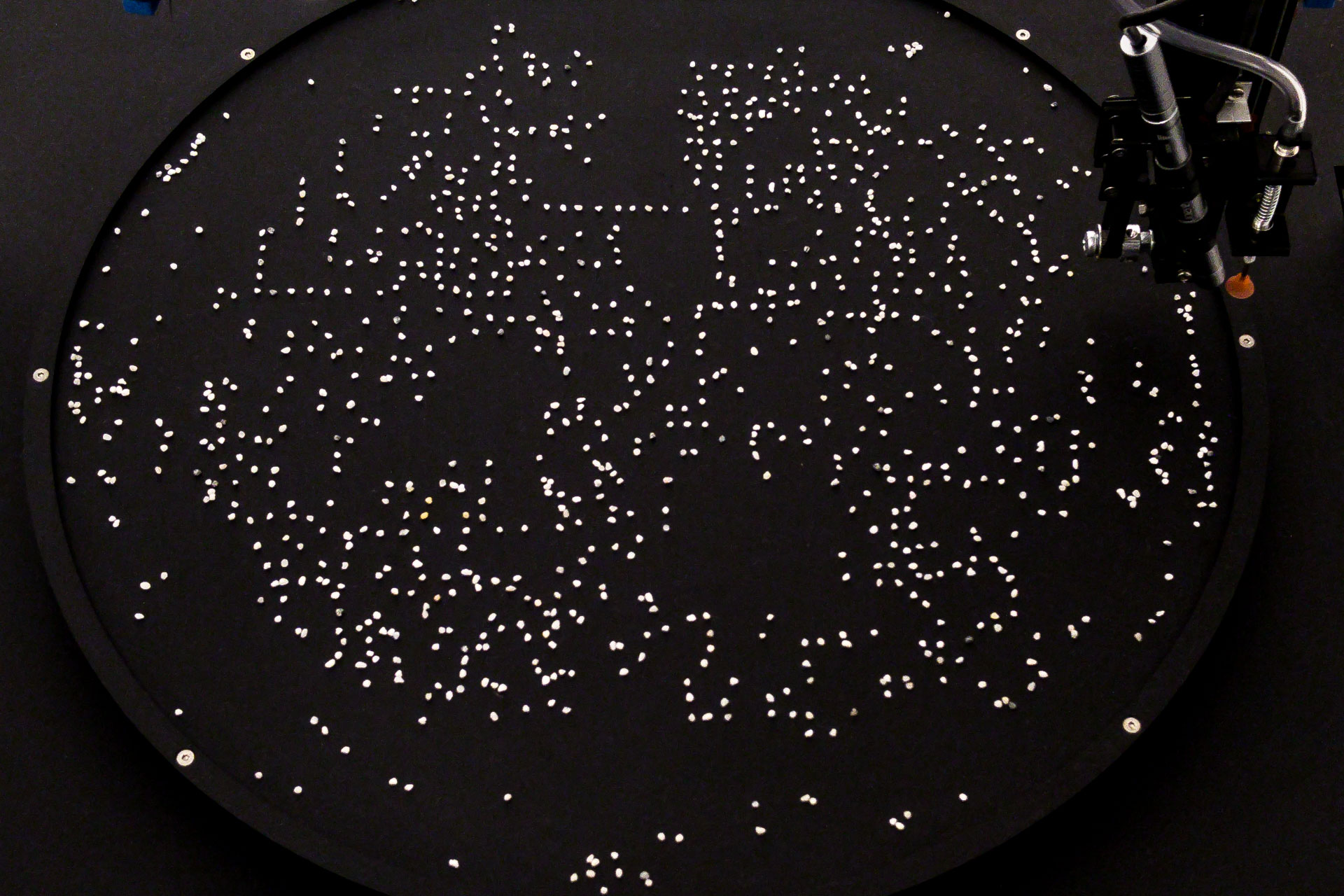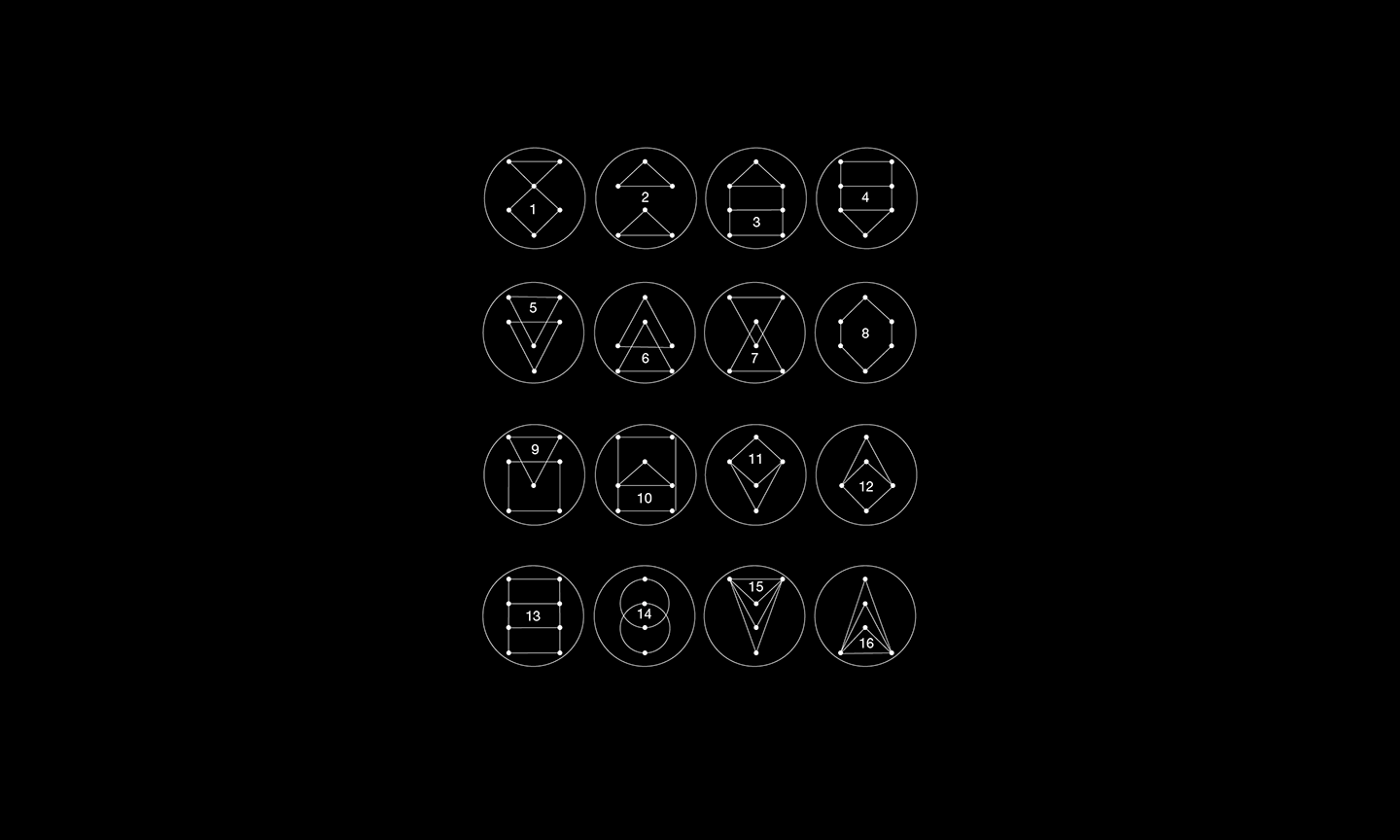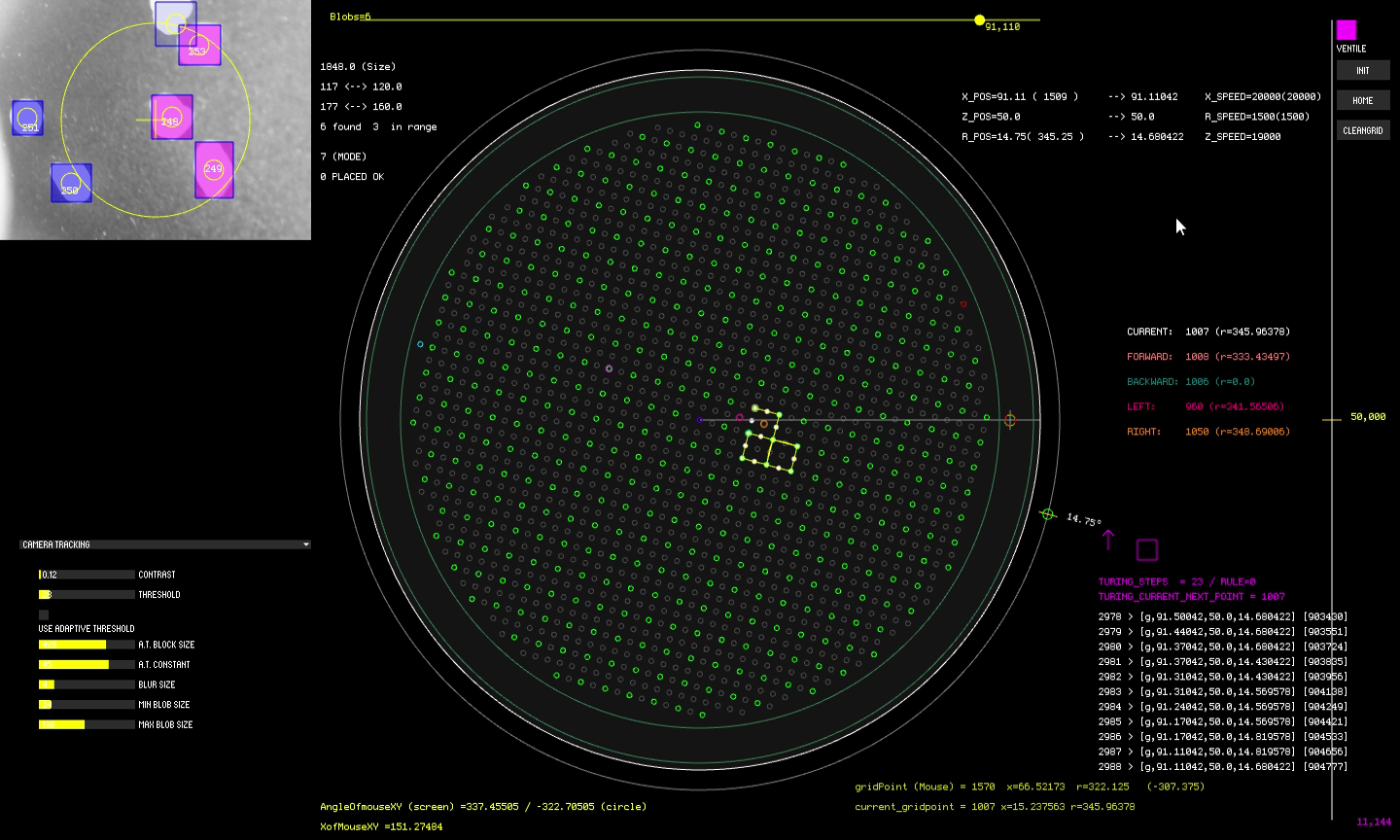Random Access Memory is a fully functional digital memory. Instead of operating with semiconducting components to represent either the binary states of 0 (zero) or 1 (one), the memory uses grains of sand as storage material. Sand grains can be read, placed, or removed on a rotating disc by a three-axis pick-and-place mechanism combined with a microscope camera to track the position of a single grain of sand. This memory mechanism is prone to errors, due to misreadings, bouncing grains, and other imponderables.
Furthermore, the machine performs a computational process on this memory. The algorithm, executed on the sand grains, is a so-called Turmite, a two-dimensional, operational Turing Machine. Its only goal is to write as many ones (stones) as possible in the memory and to avoid termination, following a strict rule. This process produces a complex and repetitive pattern on the disc.
The apparatus investigates the contrast between a pure mathematical process (algorithm) and its “impure” material implementation in the world. It reflects on the interaction of idea and matter and their encounter in contemporary information technology. It forms some kind of hybrid between contemporary and ancient technology. Computing with sand, geomancy, or ilm al-raml [the science of sand], is an old Arabic divination technique based on sand grains or other geological material, being cast onto the surface of a plane. A strict set of rules is recursively applied to the placement of the grains which get condensed into specific figures whose interpretation provides knowledge about the future. Nowadays, Boolean algebra is inscribed into thin layers of purified silicon, another geological material, in order to execute complex simulations on it – like, for instance, weather prediction.
Produced with support from the Graduate School of the University of the Arts, Berlin, and from the Einstein Foundation.
Exhibitions/Performances:
Trondheim international biennale for art and technology / Meta.Morf X – Digital Wild
2020-03-05 - 2020-05-03
Trondheim Kunstmuseum Gråmølna, Trondheim NOR
Thinking Machines. Ramon Llull and the ars combinatoria
2018-11-03 - 2019-03-10
EPFL ArtLab, Lausanne CH
DIA-LOGOS. Ramon Llull und die Kunst des Kombinierens
2017-03-17 - 2018-08-05
Zentrum für Kunst und Medien (ZKM), Karlsruhe DE
kinetical patterns
2017-09-01 - 2017-10-12
Galerie Gerken, Berlin DE
Prima Materia
2017-05-11 - 2017-05-14
Fiber Festival 2017, Amsterdam NL
No New Kind of Duck - Graduale 16
2016-10-20 - 2016-10-23
Kunstverein am Rosa-Luxemburg-Platz, Berlin DE
